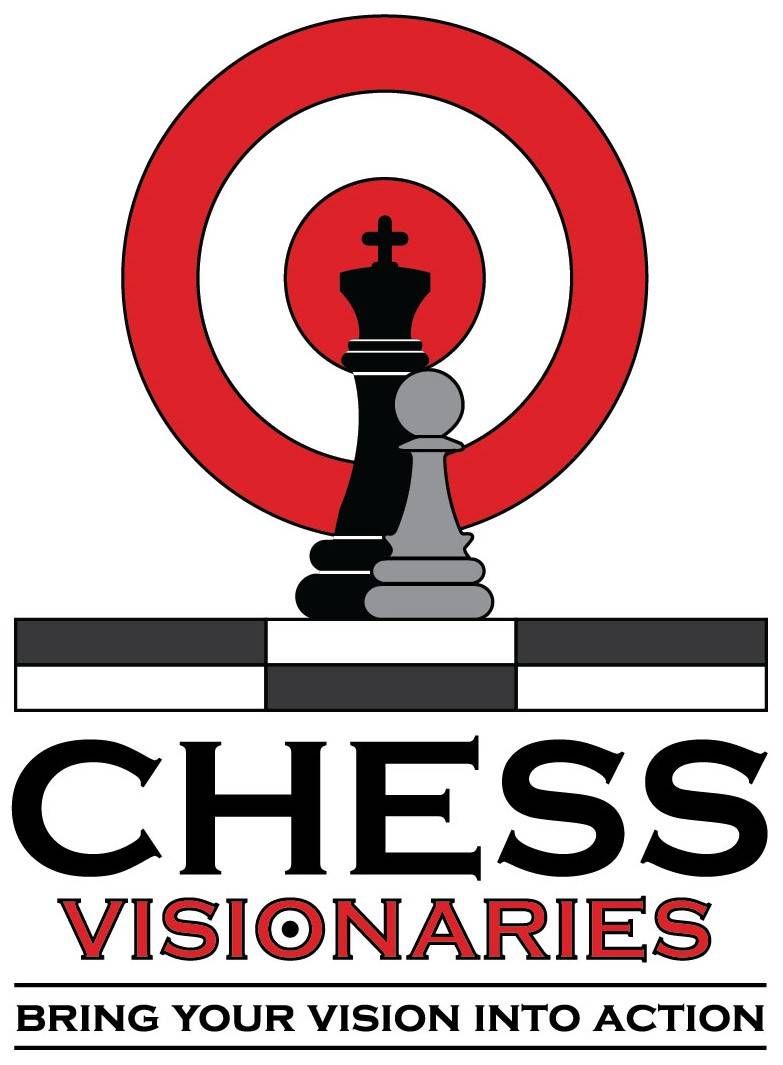BRING YOUR VISION INTO ACTION
Let’s review the basics of development and why you want to avoid running your queen around the board!
Topic 1
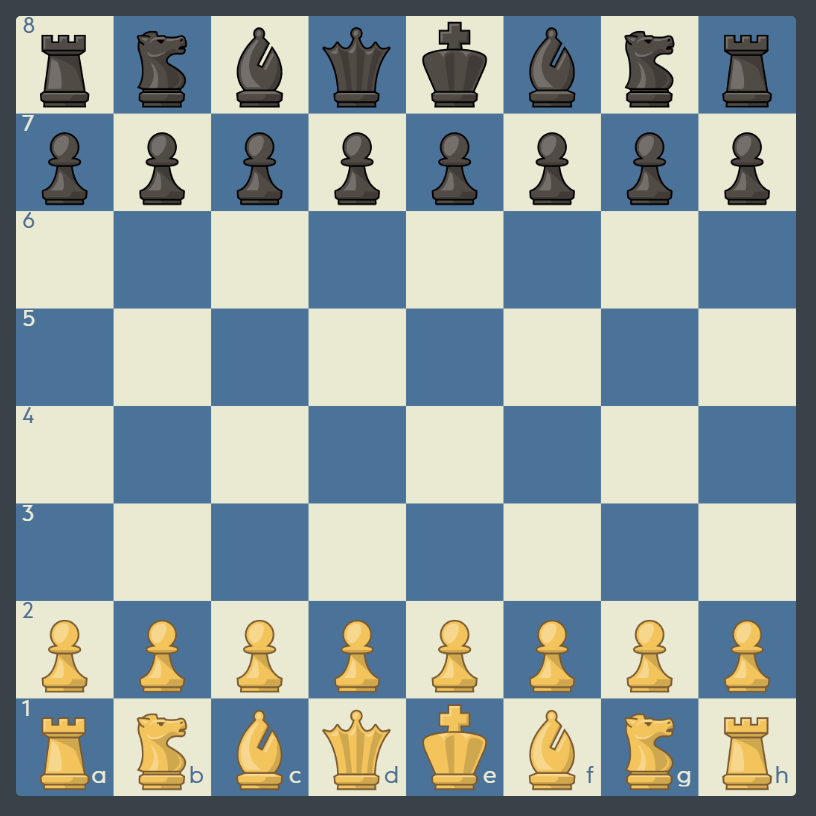
If your queen is brought out to the middle of the board too soon, she’ll end up spending all her time running from enemy pieces!

White begins with a good opening move.

This isn’t really a bad move, but Black must be very careful because in order to take the pawn back he has to move his queen!
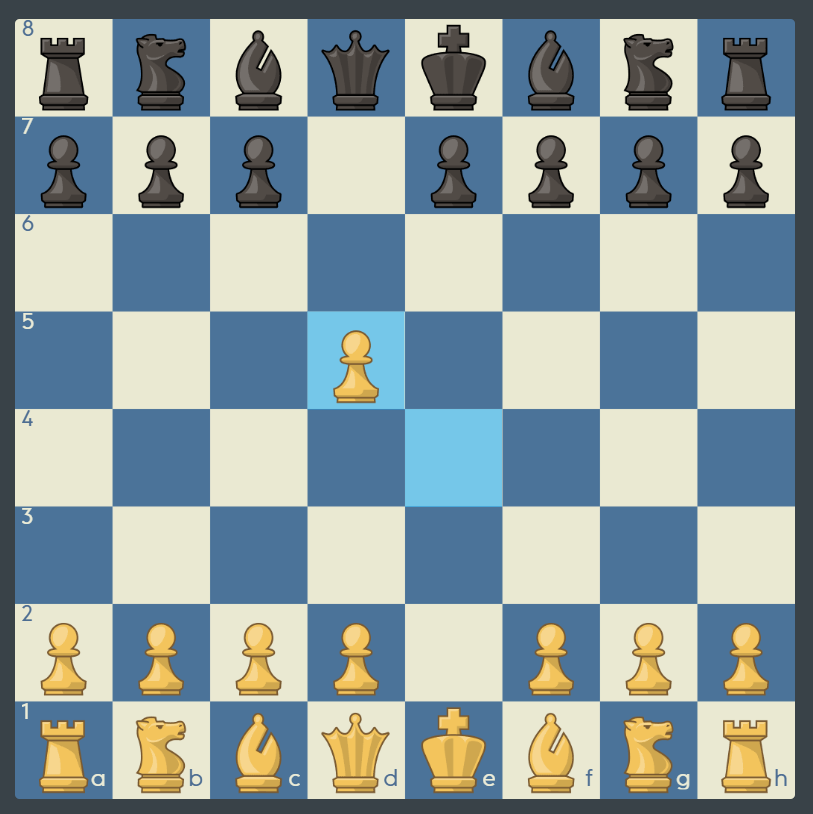
White captures the pawn.
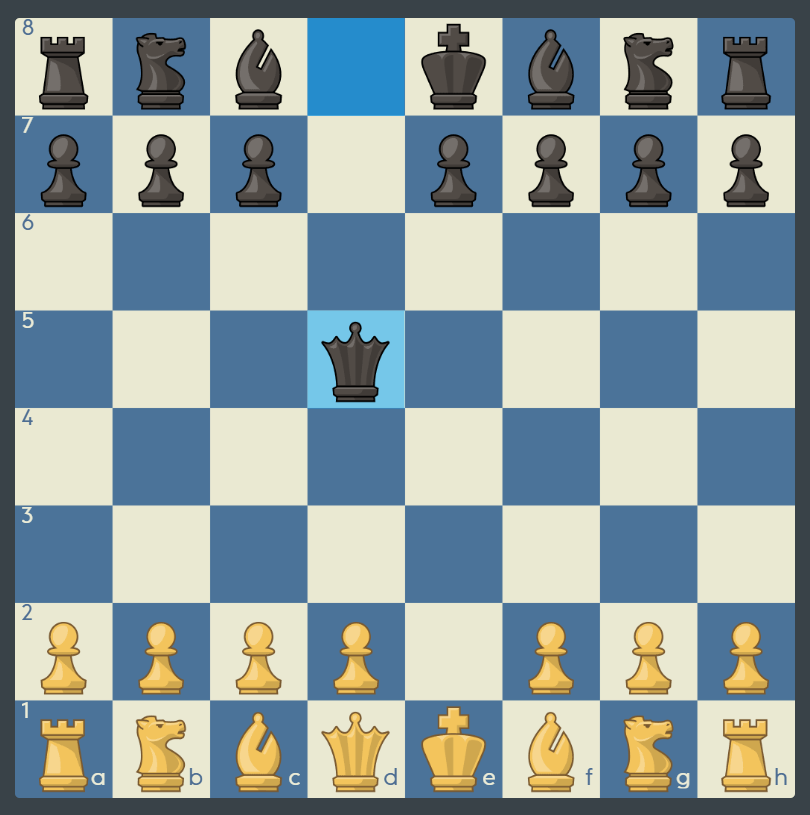
The only way to make sure of getting the pawn back is by capturing it. But now the queen is in the middle of the board!
Now it is your turn. How can White attack the queen and begin chasing it around, developing pieces in the meantime?
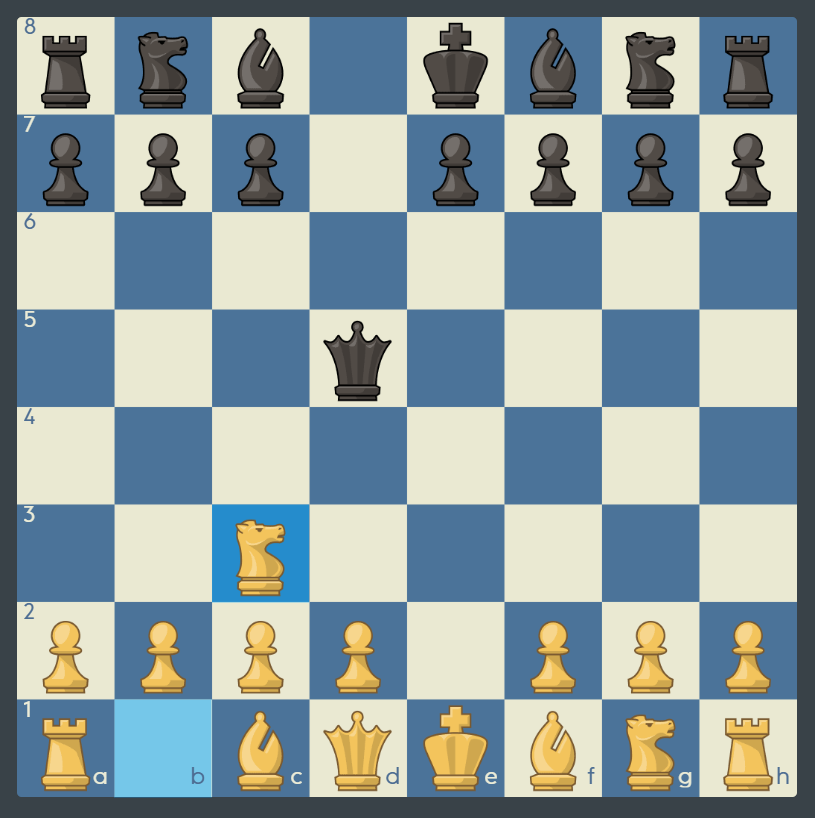
Very good! The knight develops, and since it is worth less than the black queen, she has to step aside.

This is not a good move! The queen is still too exposed here. Instead the queen should either go right back home to d8, or to a5 where she is relatively safe, or to d6.
That was fun! Let’s attack the queen again.

Excellent! The queen is attacked. Even though the move d4 doesn’t bring a piece out right away, it is still a very important move for development, allowing the bishop on c1 to come out.

This is a mistake, since White can now win the queen. But when your queen is running around, chased by the opponent’s pieces, it is easy to lose her!
Now try to find a move to attack and win the black queen!

Congratulations! The bishop attacks the black queen, and the queen cannot move away because then the king would be in check! This is called a “pin”. Notice that the knight on c3 is supporting the bishop.
Topic 2
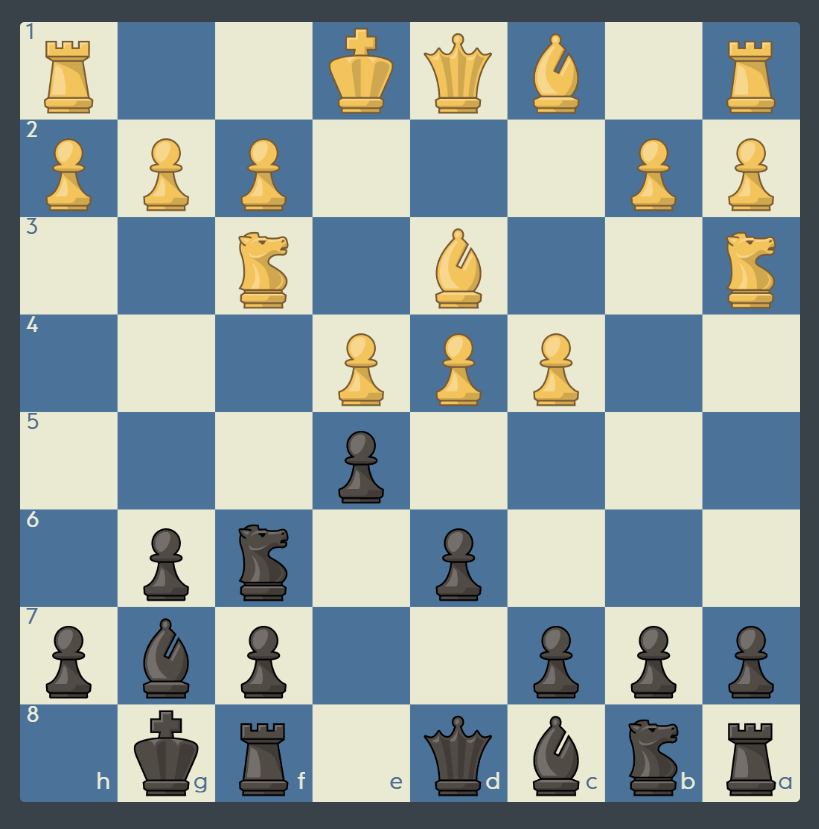
Pieces should be developed so that they point toward the center, or attack enemy pieces that protect the center. Where can the c8 bishop go to help fight for the center?
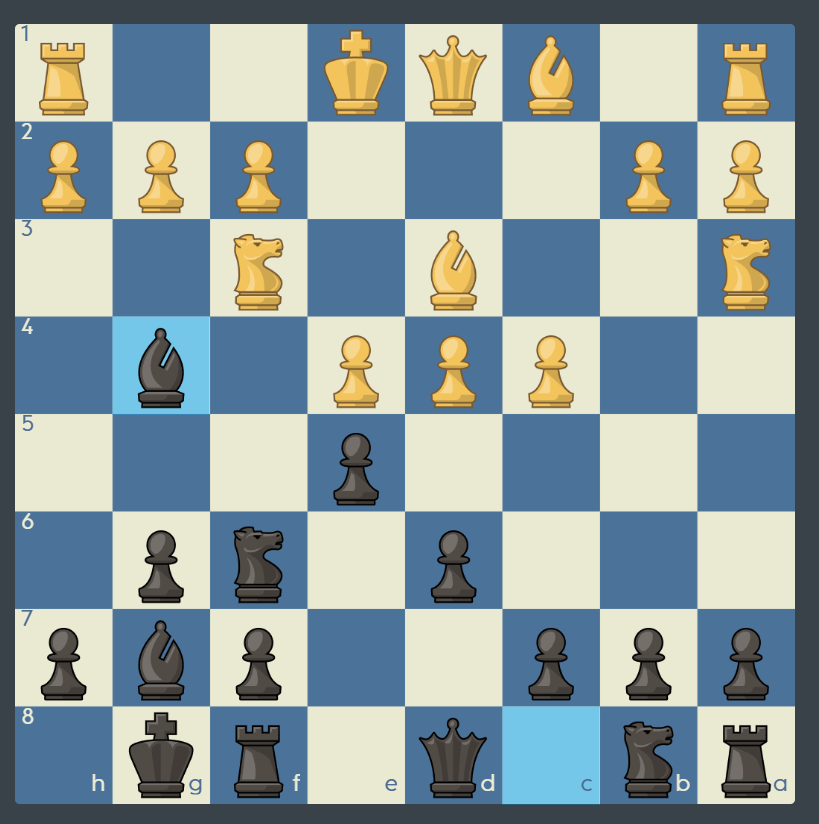
This is a great move! The bishop moves to a good square, where it also attacks the knight on f3. The knight is pinned to the queen on d1, and its job of guarding the center just got tougher.
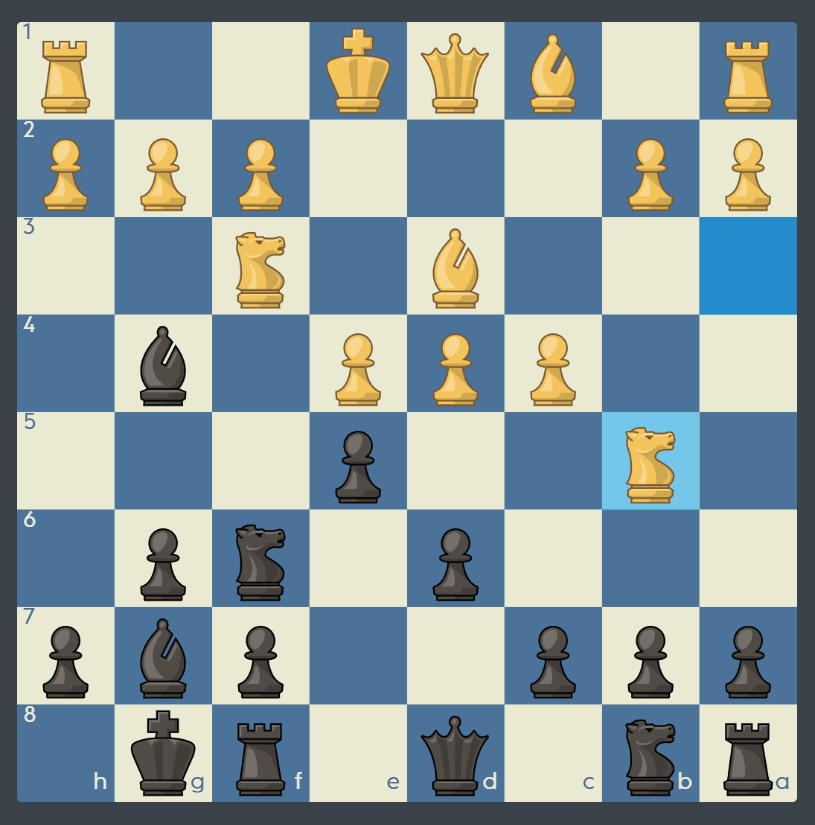
Not the best move for White. White is trying to use the “one-piece army” tactic, which we already know is not good. The knight will just be chased back.
The knight on a3 has leapt to b5. How can we just chase it home, especially so it doesn’t defend the pawn on d4?

Good! Even though this move doesn’t develop a piece, it chases the knight right back and gives Black a chance to take a free pawn.

White thoughtfully moves the knight back to a better square, but it is too late! The knight has wasted too many moves.
The white knight is back in the game, but it has moved three times in a row, and this creates problems for White.

Because of the knight’s journeys, Black gains control of the center and wins a pawn. White can’t recapture on d4 with the knight because then the black bishop captures the queen on d1. Black is much better here.
Topic 3

What if your opponent is not bringing pieces out at all, but instead just creates a wall of pawns? No worries! We just bring our pieces to active positions pointed to the center. What would you do here?

Super! The bishop comes to a great spot, pointing at central squares and also aiming at Black’s pawn on e6.
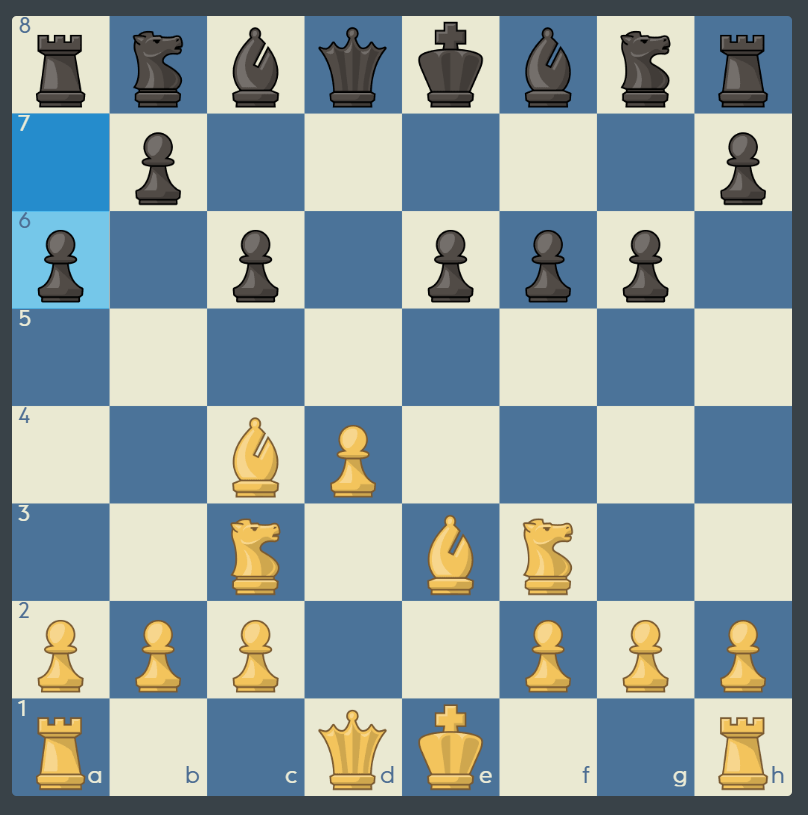
Black had really better hurry up developing pieces, but instead he keeps pushing his pawns. This won’t turn out well….
All of our minor pieces are developed, and every black piece is on the back rank. There are still a few more moves to complete our development before we can prepare an attack.
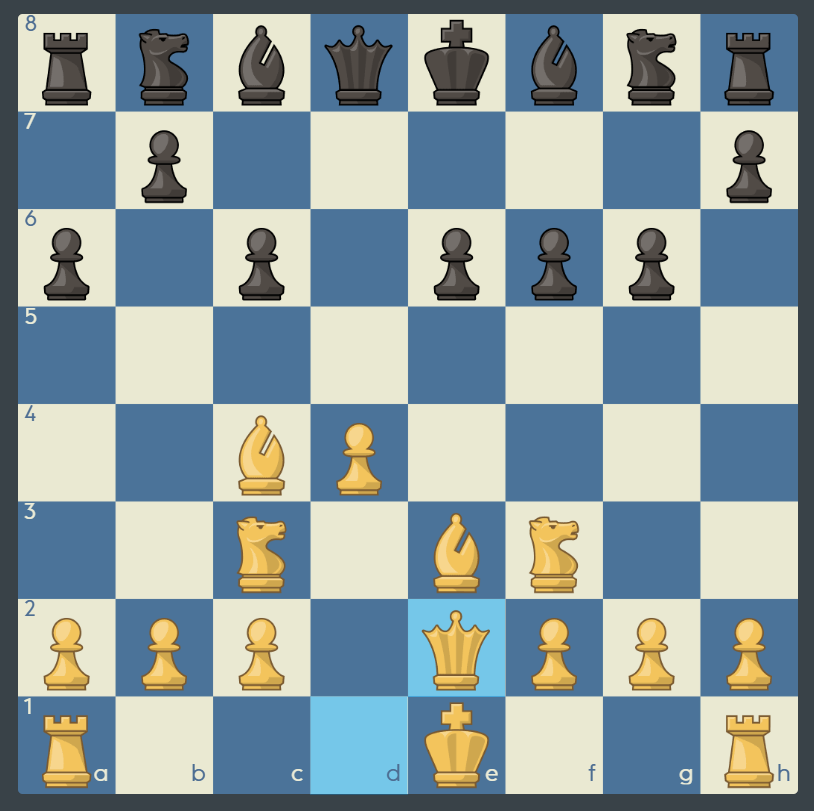
Great move! The queen moves off the back rank, allowing White to castle on either side. And she’s on an open file, poised to attack.
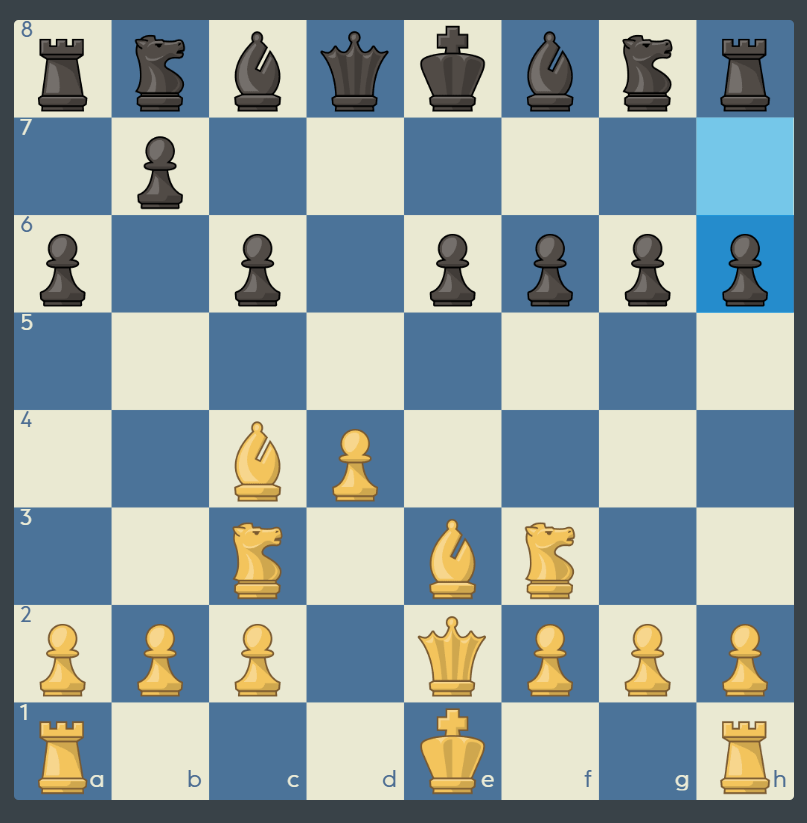
Black continues pushing pawns and ignoring good chess ideas.
After this next move, White’s opening will be complete. She will have completed all three goals of the opening: develop, control the center, get castled.
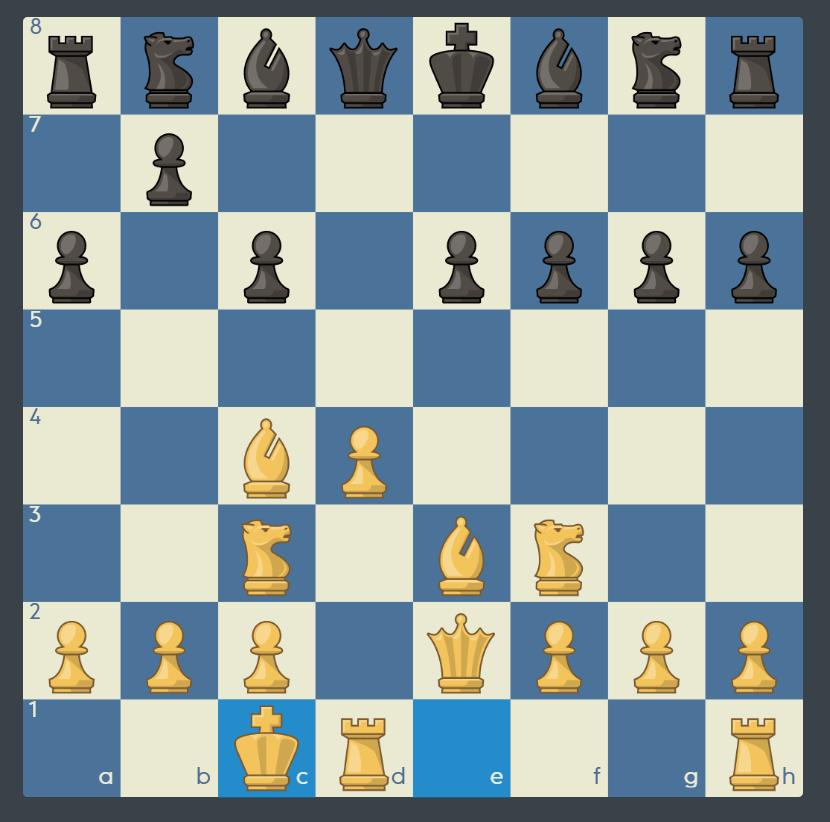
Great move. Castling is an important part of the opening. The king is now safe. Both rooks can come to the center. With all the black pieces still on their starting squares, it will be difficult for him to defend.
Topic 4

Castling is important for getting your king into safety. But there is another reason why you should castle: it develops a rook! Take a look here. White can castle and attack.
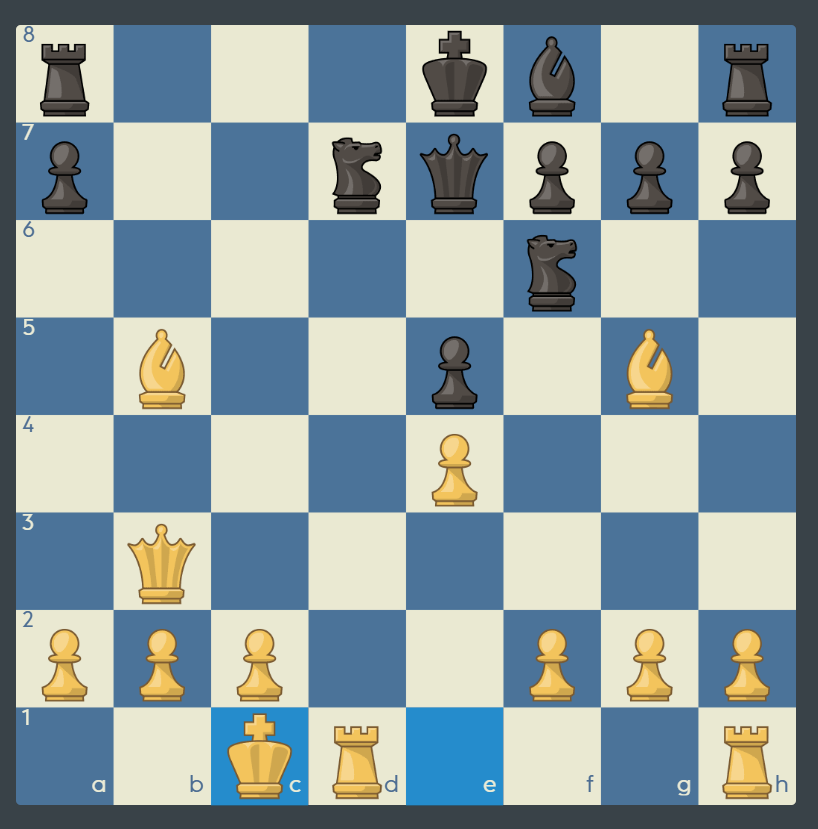
Super! Now the rook is on an open file where it is attacking the knight on d7. Safety, development and attack, all in one move!
Topic 5
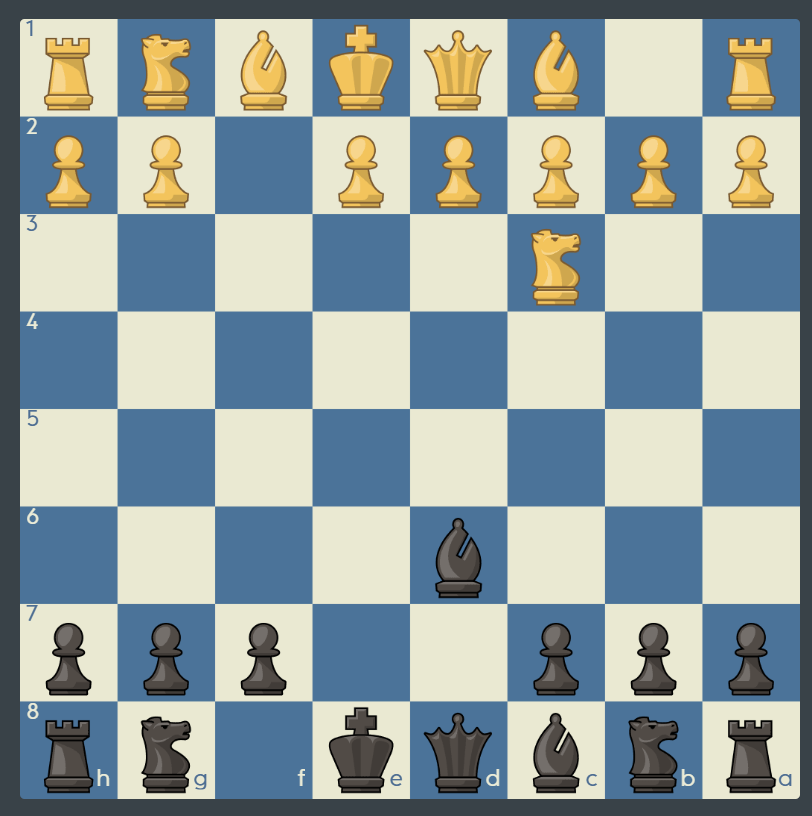
We learned that you should not bring your queen out early. That’s an important rule! But there are sometimes exceptions to the rules…

Super move! But…Black brought out the queen as early as the fourth move of the game! Are you sure you see the followup?
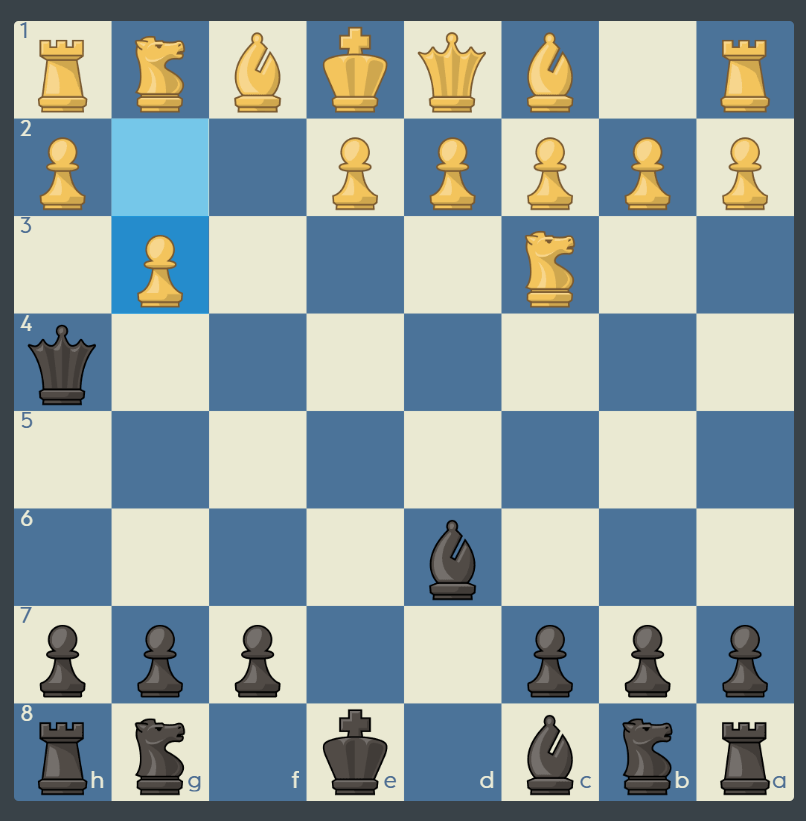
The only way for White to get out of check is to block with this pawn.
White has blocked the check, but Black can still force checkmate. There are two equally-good moves. Try to find one of them.
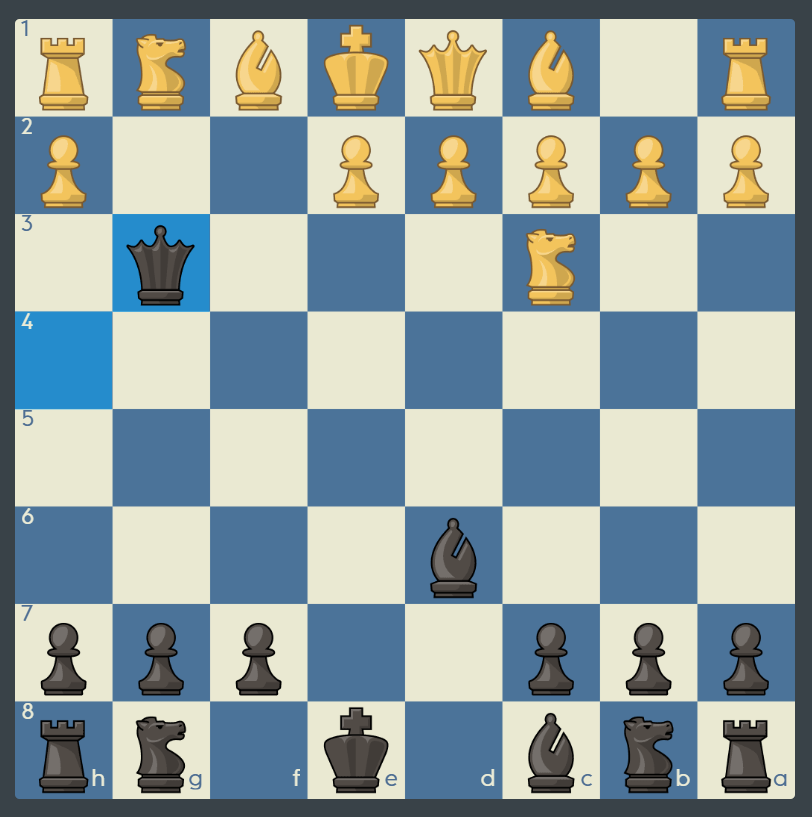
A beautiful queen sacrifice! White gets to capture the queen for just a pawn. But Black is going to checkmate on the next move.
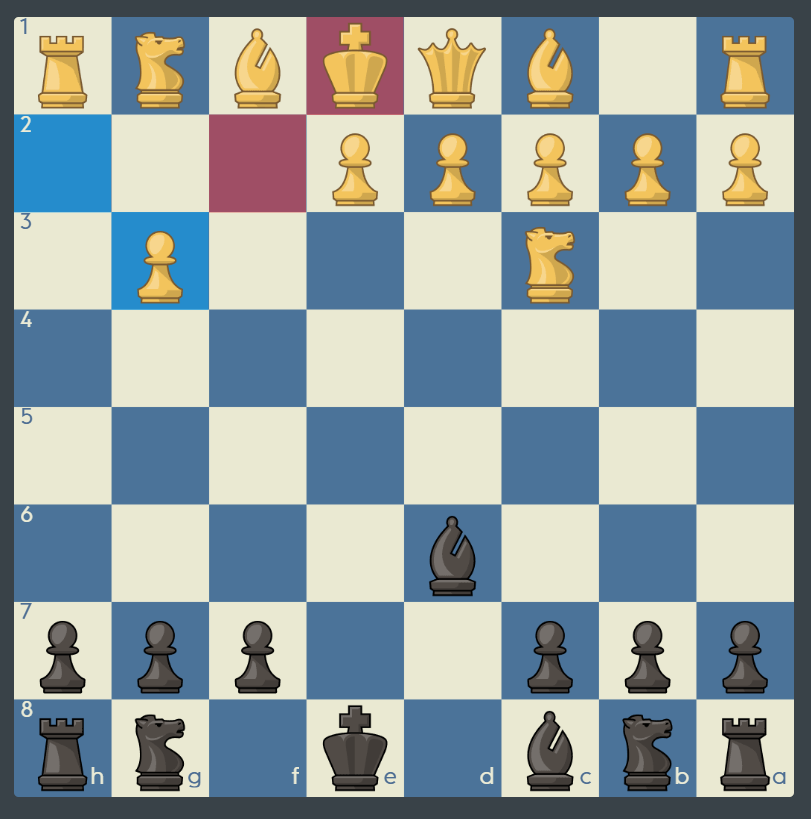
This is the only way out of check – the king cannot move, and there are no pieces to block.
Now can you see the checkmating move?
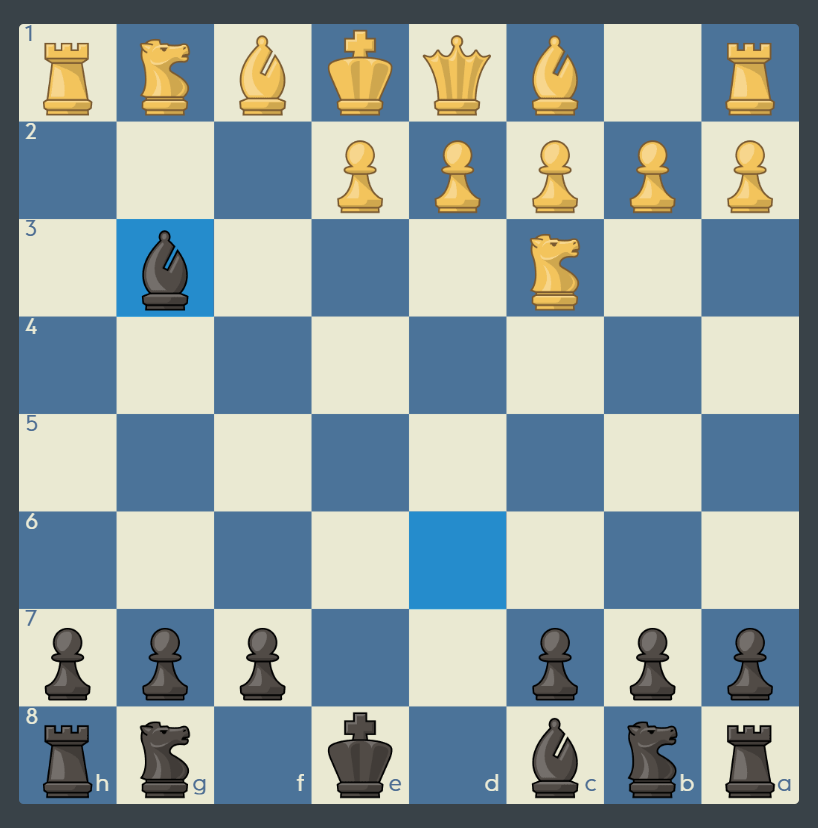
Bravo! The white king has no way out of check. You would never find the first queen check if you were too stubborn to look for other possibilities. One reason chess is so interesting is because even though there are guidelines, sometimes you must break them!
